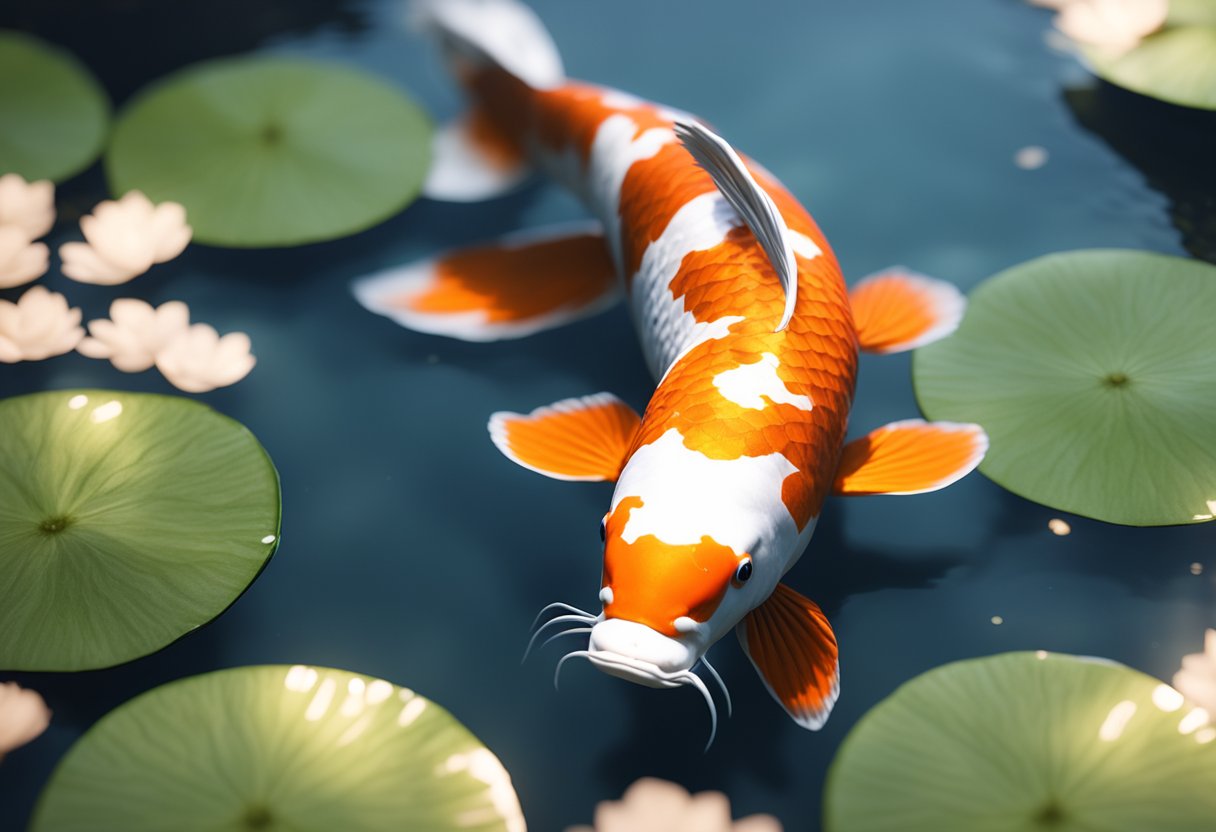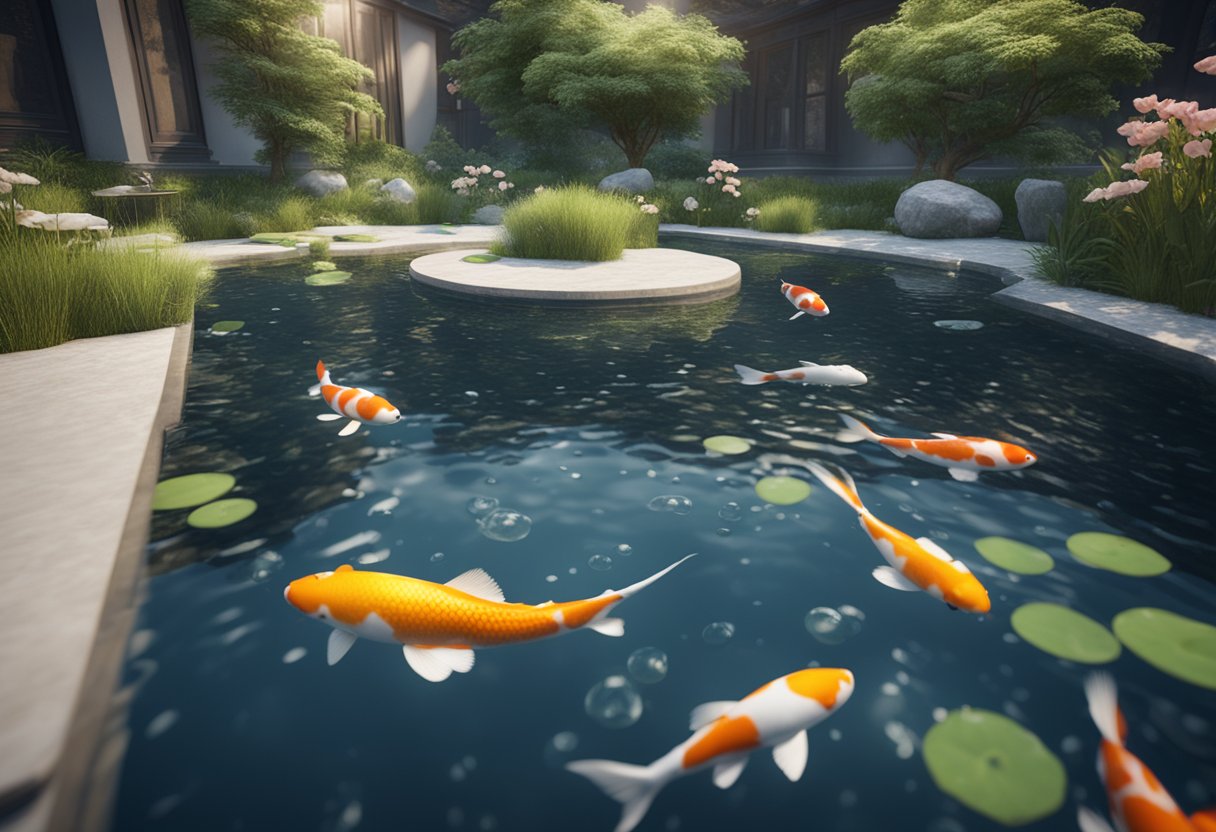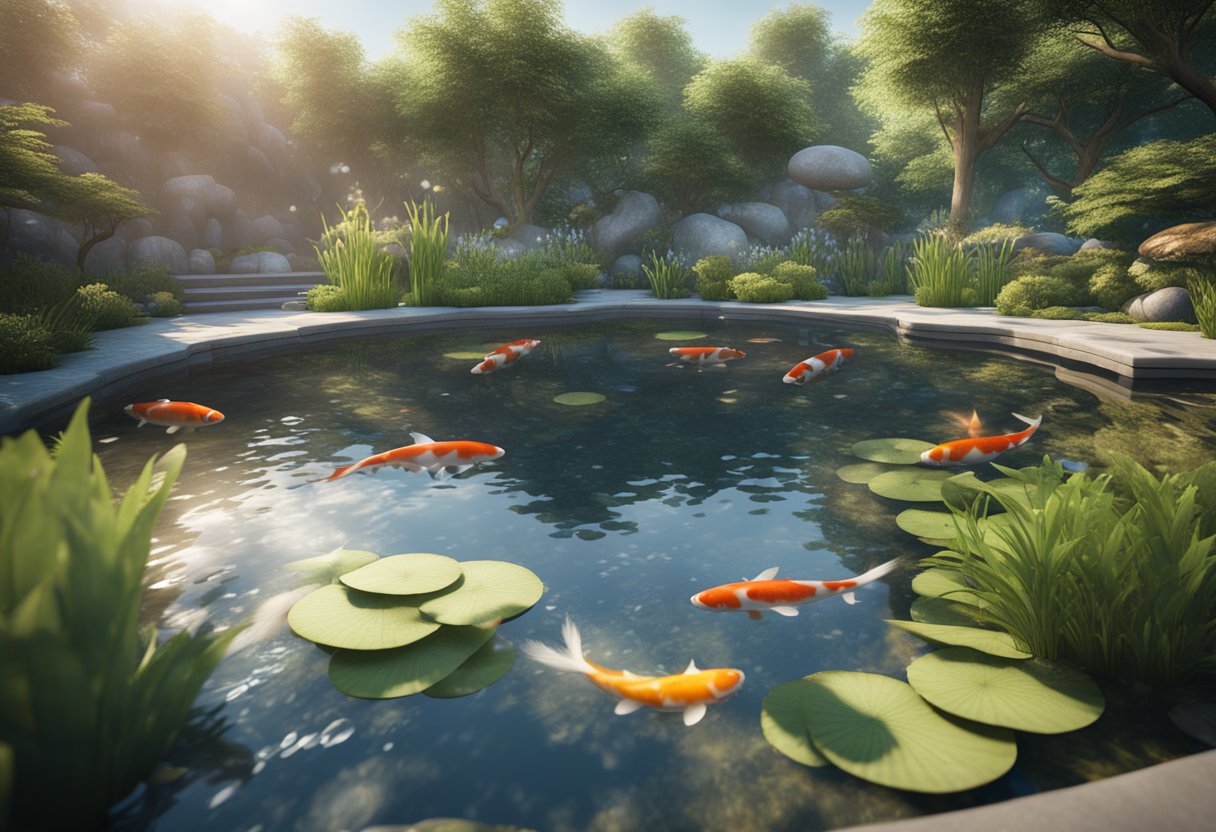Ensuring the right temperature in your koi pond is crucial for maintaining optimal conditions and promoting the health and well-being of your beloved koi fish. Proper koi temperature regulation and koi pond temperature control are necessary to create a comfortable environment that supports their growth and vitality.
In this comprehensive guide, we will explore everything you need to know about koi temperature regulation and how it affects the overall health of your fish. From understanding the ideal temperature range for koi fish to managing seasonal changes and temperature fluctuations, we’ll cover it all. We’ll also provide practical tips and techniques to help you effectively control the temperature in your pond throughout the year.
By maintaining a stable water temperature, you can prevent stress, diseases, and other complications that can arise from temperature variations. Whether you’re a seasoned koi keeper or new to the hobby, learning the art of koi pond temperature control is essential for creating a thriving aquatic ecosystem.
So, let’s dive in and discover the key factors involved in achieving and maintaining optimal temperature conditions for your koi pond. Together, we’ll ensure that your koi fish thrive in a comfortable and healthy environment.
Understanding the Optimal Temperature for Koi Fish
Koi fish are known for their vibrant colors and graceful movements. To ensure their overall health and well-being, maintaining the optimal temperature in their pond is vital. The temperature of the water directly affects their immune system, metabolism, and overall physiological functions. Understanding the ideal temperature range for koi fish is crucial for providing them with a suitable aquatic environment.
Koi fish thrive in water temperatures between 59°F (15°C) and 77°F (25°C). Within this range, they are most comfortable and exhibit maximal growth and vitality. Temperatures below 50°F (10°C) can cause their metabolic rate to slow down, affecting their digestion and compromising their immune system.
It is important to note that koi fish are cold-blooded animals, meaning their body temperature fluctuates based on the temperature of their surroundings. Thus, maintaining a stable and appropriate water temperature is essential for their well-being and overall health.
“The optimal temperature for koi fish is between 59°F (15°C) and 77°F (25°C). Within this range, they thrive and exhibit maximal growth and vitality.”
Water temperature directly influences various aspects of koi fish health. Cooler water temperatures in the optimal range promote a stronger immune system, allowing them to resist diseases more effectively. Additionally, warmer water temperatures stimulate their metabolism, leading to improved digestion and increased growth rate. Furthermore, maintaining the optimal temperature range helps regulate oxygen levels in the water, preventing potential suffocation or stress.
Proper temperature control in the koi pond also has a significant impact on their breeding behavior. Certain temperature ranges trigger spawning activities and increase the chances of successful reproduction.
In order to maintain optimal temperature conditions for koi fish, regular monitoring is necessary. Utilizing various tools and techniques to measure and track water temperature is crucial for ensuring their well-being. By understanding the optimal temperature range and its impact on koi fish health, pond owners can provide a suitable environment that promotes their overall growth and vitality.
Seasonal Changes and Temperature Fluctuations in Koi Ponds
Seasonal changes play a significant role in the temperature fluctuations of koi ponds throughout the year. As the weather transitions from one season to another, the temperature of the water can vary, impacting the overall well-being of the koi fish. Understanding and managing these temperature fluctuations is essential for maintaining a healthy and thriving pond environment for your koi.
Effect of Seasonal Changes
Koi ponds are influenced by the surrounding environment, including the changing seasons. During the warm summer months, the water temperature tends to rise, creating a favorable environment for the koi fish. However, as the cooler autumn weather approaches, the water temperature starts to decline, signaling the need for adjustments in pond maintenance.
In winter, koi ponds can experience even more dramatic temperature fluctuations, especially in regions with particularly cold climates. Freezing temperatures can pose a significant risk to the fish if proper precautions are not taken. It is crucial to be prepared for these seasonal changes and implement strategies to safeguard the koi during colder months.




